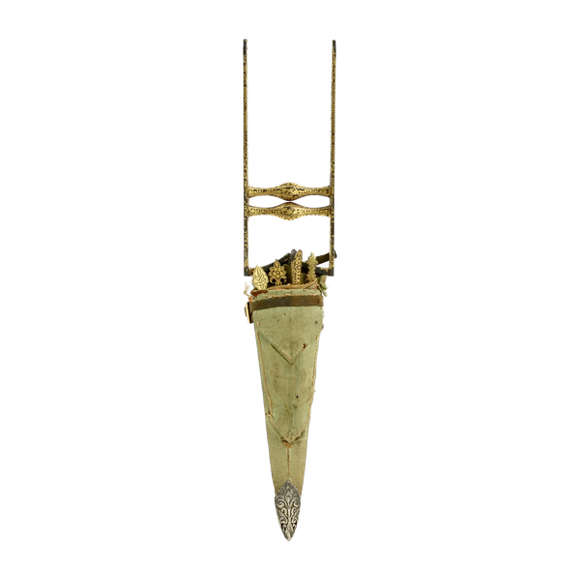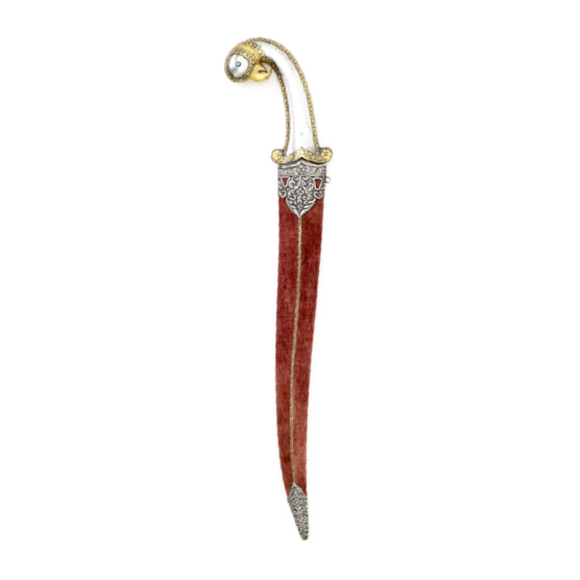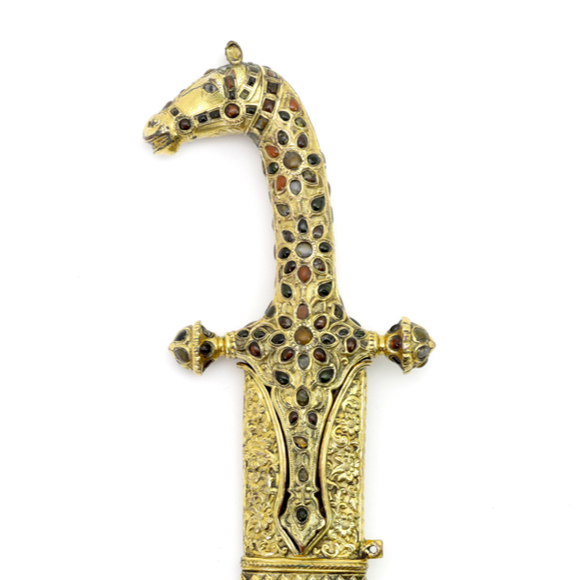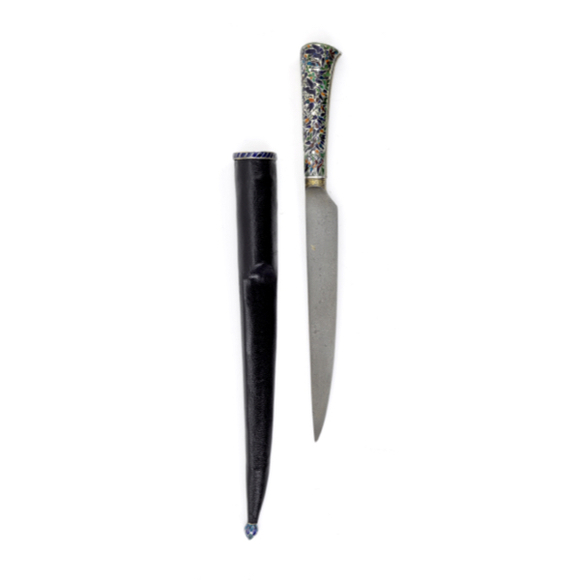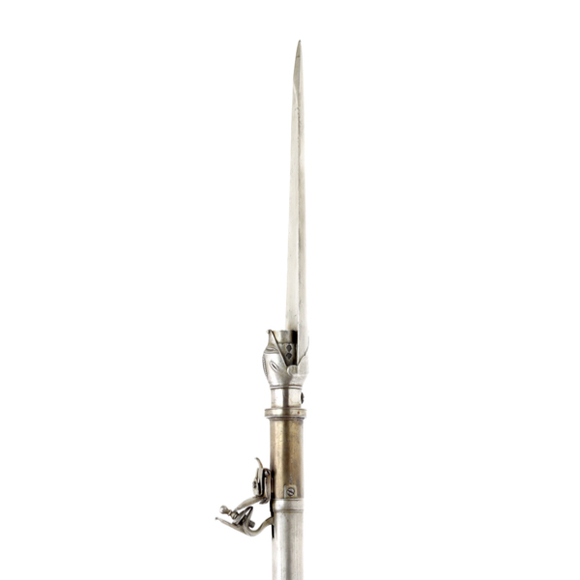With a fine wootz blade with a pronounced center ridge.

Sheathed 41.9 cm
Dagger 39.1 cm
27.2 cm
Base 3 mm
Middle 3.5 mm
Tip 3 mm
Base 34.5 mm
Middle 28 mm
5 cm from tip 17 mm
In scabbard 504 grams
Dagger 426 grams
1 cm into hilt
Nephrite jade, wootz steel, wood, silver, silk velvet, metallic wire
India
17th-19th century
From a Scandinavian collection
Description
An Indian jade-hilted dagger complete with a jade-mounted scabbard.
The recurved blade is of the typical form, made of dark grey Indian wootz.
The pistol grip jade hilt is elegantly carved with two stylized iris flowers and three buds on either side. The back of the pommel is carved with a poppy flower.
Scabbard
The scabbard is made of wood, covered with silk velvet, and decorated with metallic wrapped threads. It has two mounts carved out of the same tone of jade as the hilt, also decorated with irises. Attached to the locket is a silver loop with a lily outline in its center. I have the feeling the jade mounts are older than the scabbard body, but the scabbard is at least 19th century and definitely "working life".
Symbolism
The iris is associated with purity in Hinduism. Its three petals as depicted in art are thought to represent the three Gunas (qualities of nature); sattva, rajas and tamas. They represent purity and harmony, energy and action, and impurity and darkness respectively.
Condition
Good condition. Some chips to the locket, but the jade hilt and scabbard endpiece seems free of damage. Some wear to velvet. See photos.

Dating
Jade hilts of this form became very popular in North India in the 17th century and remained in production since. In the late 1750s, the Qianlong emperor of China's Qing dynasty gained control over Hotan, the oasis town from where the best nephrite jade was minded. His officers found there a lively production of jade hilts for the Mughal court. Many of them were intercepted and sent to Qianlong instead who fitted hundreds of swords and daggers with them. Study of these hilts gives a good idea of mid-18th-century production.
Dating can be difficult because styles changed little, but I believe this jade hilted dagger and its matching scabbard mounts dates from either the 17th century or the 18th century at the latest.
The Royal Collection Trust has a dagger with nephrite jade hilt and scabbard mounts of comparable form, which was presented in 1807. Accession number RCIN 11508.
Conclusion
I nice example of a jade-hilted dagger with a matching jade-mounted scabbard. Such ensembles with all jade parts still present are very rarely found on today's market. The jade itself and the carvings are of a rather good quality.
























The style typical of Kutch, the execution far above what is normally seen on work from that area.
With designs of animals, often attributed to Lucknow, north India.
A what? Yes exactly. An extremely rare piece, the only example I am aware of in published collections at…

